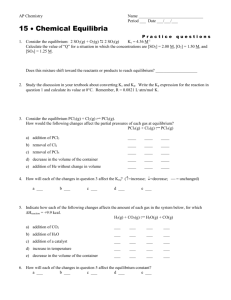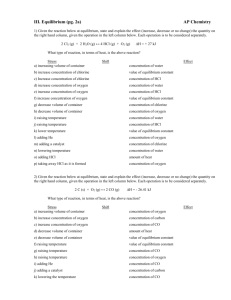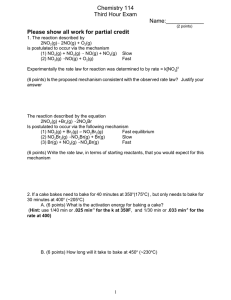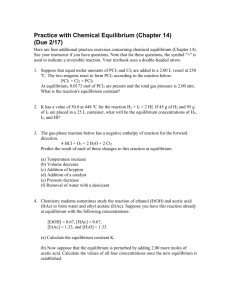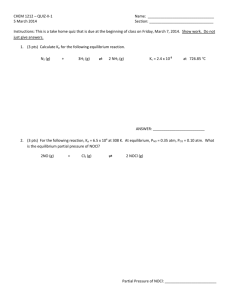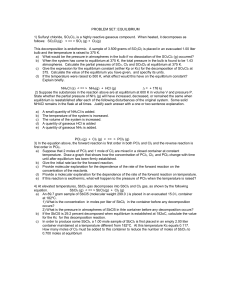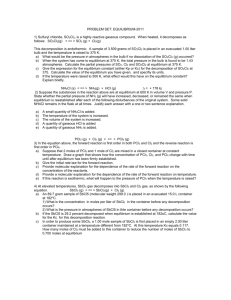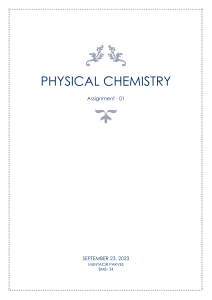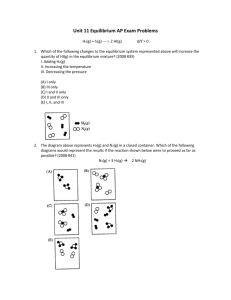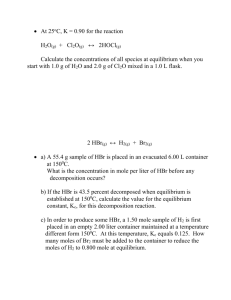South Pasadena · AP Chemistry
advertisement
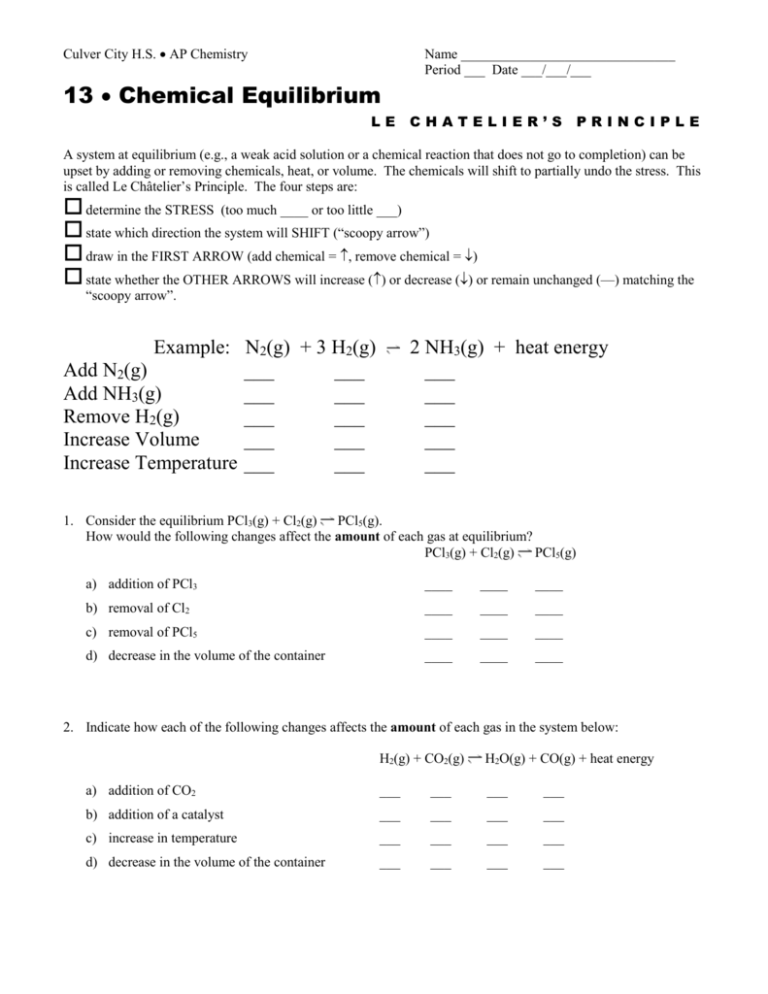
Culver City H.S. AP Chemistry Name _______________________________ Period ___ Date ___/___/___ 13 Chemical Equilibrium LE CHATELIER’S PRINCIPLE A system at equilibrium (e.g., a weak acid solution or a chemical reaction that does not go to completion) can be upset by adding or removing chemicals, heat, or volume. The chemicals will shift to partially undo the stress. This is called Le Châtelier’s Principle. The four steps are: determine the STRESS (too much ____ or too little ___) state which direction the system will SHIFT (“scoopy arrow”) draw in the FIRST ARROW (add chemical = , remove chemical = ) state whether the OTHER ARROWS will increase () or decrease () or remain unchanged (—) matching the “scoopy arrow”. Example: N2(g) + 3 H2(g) Add N2(g) ___ ___ Add NH3(g) ___ ___ Remove H2(g) ___ ___ Increase Volume ___ ___ Increase Temperature ___ ___ 2 NH3(g) + heat energy ___ ___ ___ ___ ___ 1. Consider the equilibrium PCl3(g) + Cl2(g) PCl5(g). How would the following changes affect the amount of each gas at equilibrium? PCl3(g) + Cl2(g) PCl5(g) a) addition of PCl3 ____ ____ ____ b) removal of Cl2 ____ ____ ____ c) removal of PCl5 ____ ____ ____ d) decrease in the volume of the container ____ ____ ____ 2. Indicate how each of the following changes affects the amount of each gas in the system below: H2(g) + CO2(g) H2O(g) + CO(g) + heat energy a) addition of CO2 ___ ___ ___ ___ b) addition of a catalyst ___ ___ ___ ___ c) increase in temperature ___ ___ ___ ___ d) decrease in the volume of the container ___ ___ ___ ___ 3. Consider the equilibrium: 2N2O(g) + O2(g) 4NO(g) How will the amount of chemicals at equilibrium be affected by 2N2O(g) + O2(g) 4NO(g) a) adding N2O ___ ___ ___ b) removing O2 ___ ___ ___ c) increasing the volume of the container ___ ___ ___ d) adding a catalyst ___ ___ ___ When the question asks about concentration of chemicals rather than amount, a subtlety occurs. Concentration is moles per Liter. A solid or a liquid cannot change concentration, so it will always be (—). The amount of a solid of liquid can change, but the concentration will not change. 4. For the reaction, How will the concentration of each chemical be affected by a) adding O2 to the system 4NH3(g) + 3O2(g) 2N2(g) + 6H2O(l) ___ ___ ___ ___ b) adding N2 to the system ___ ___ ___ ___ c) removing H2O from the system ___ ___ ___ ___ d) decreasing the volume of the container ___ ___ ___ ___ 5. For the reaction, How will the concentration of each chemical be affected by a) adding CaCO3 to the system CaCO3(s) CaO(s) + CO2(g) ___ ___ ___ b) adding CO2 to the system ___ ___ ___ c) removing CaO from the system ___ ___ ___ d) decreasing the volume of the container ___ ___ ___ The Rules: Add a reactant, shift to the products. Add a product, shift to the reactants. Increase temperature, shift away from heat. Decrease temperature, shift toward heat. Increase pressure (reduce volume), shift toward side with fewer moles of gas. Decrease pressure (increase volume), shift toward side with more moles of gas. Concentration of solids and liquids cannot change, adding a solid or liquid will not shift the equilibrium. The only stress that changes the Keq is temperature. A catalyst does not change the equilibrium… it allows the system to reach the same equilibrium more quickly.
